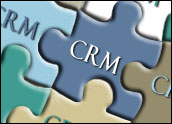
Companies now have many options when it comes to packaged applications for CRM, and these applications are helping companies reduce development time, in some cases by as much as 65 percent, which in turn helps save money.
These resources are now freed up to explore greater CRM customization that ultimately helps companies focus on aligning their CRM systems with their core business objectives. With the first generation of CRM products, deployment was typically a 12 to 18 month process and complete return on investment took another 12 to 18 months.
Because packaged applications can be customized and integrated quickly, released in highly targeted deployments, and adopted rapidly by users, the initial investment is smaller. Avanade is seeing deployments happen in about one-third the time of a traditional deployment with faster returns than with traditional CRM software.
Benefits of Packaged Applications
Surprisingly, one of the key benefits of packaged CRM applications is flexibility. Because most of the newer packaged applications are based on a common development framework and are compliant with service-oriented architectures, it’s easy to “plug” the application into existing infrastructures and adapt them as a company’s CRM needs change and grow.
Packaged applications can be configured without having to write lines of code and they come out-of-the-box with the tools needed to modify the application to suit each business’s specific needs. For example, power users or IT teams can modify sales forms and publish them more quickly and with less testing.
New database fields can be created just as quickly. This flexibility shouldn’t be taken for granted; more traditional CRM systems still in widespread use often require companies to outsource such changes to consultants or to take weeks and months to move them through internal queues. However, packaged applications can be reconfigured very easily because much of the capability is provided along with a framework to easily build upon and a more open architecture that allows easy and more flexible integration.
Another advantage is that they are easily integrated with the software that most companies and organizations already use, including front-end productivity tools as well as back-end enterprise resource planning solutions. The integration with these other common applications means users can access, work with and add to their CRM information through the software that’s most likely already running on their desktops, laptops and even on their mobile devices.
They don’t need to open a separate application, and they don’t need to continually move between a CRM application and their business productivity software. The back end integration through Web services means these CRM deployments can be implemented in as little as one-third the time required for traditional CRM deployments, which generally require extensive hand-coding to integrate with existing systems.
More Flexibility
The faster time to deploy packaged CRM applications also means organizations can deploy the solution in new, more productive ways. For example, because deployment is a faster, simpler process than with custom CRM solutions, companies can more easily roll out CRM to a single department as a test, or to the department or departments that most need it.
A smaller, more focused deployment can enable an organization to see return on investment more quickly, justifying broader deployment — and then that broader deployment can happen when and as the organization wishes, in a highly iterative process that allows the organization to benefit from what it learns in each deployment phase as it moves forward.
In addition, the flexibility of the packaged applications means they can be easily customized so the interface is intuitive and easier to use. Easier use means broader and faster adoption by end users. In our experience, adoption rates for packaged applications generally reach 90 percent within a couple of months. Because the software works through familiar desktop applications, users may not even be conscious of using a CRM program — they’re simply accessing the information they need the way they’ve always accessed data. Widespread adoption drives effectiveness, because more people are updating and using the CRM information. All of this adds up to faster time to benefit and greater return on investment for organizations.
In addition to greater flexibility and customization, new packaged applications on the market now give organizations flexibility in terms of their delivery model. The solutions can be used through desktop applications, the Web browser or mobile devices. They can be deployed on-site as traditional software or acquired as a service over the Internet. They can also be purchased or rented. Organizations can change any of their deployment or ownership decisions at any time while preserving their investments, because all versions of these packaged applications run on the same code base, eliminating the need to redeploy software or write new code when moving from one model to another.
Determining the Right Approach
Companies that are currently running traditional CRM applications and considering upgrading to a packaged application should first determine if their environment requires a highly integrated and customizable approach to CRM.
If the answer is yes, they would see good returns on a packaged CRM application. Still, some organizations should probably move more slowly toward packaged applications — including organizations that have existing CRM applications that are already heavily customized. Such organizations will have to test and verify the migration of each customization before going live with the upgrade. If your organization falls into this category but you are anticipating expanding your CRM capabilities, it is worth considering making the move to a packaged CRM application.
Once an organization decides to move to a packaged application, one of the next questions it faces is which business model of the software is right for it. In general, organizations should look for the model that complements an organization’s existing strengths and that mitigates its weaknesses. For example, if the organization lacks a disaster recovery program, then gaining that capability (at least for CRM) through a service-based version will be a benefit. If the organization has the chance to increase its return on investment in an extensive on-premise infrastructure, then the self-hosted model may be appropriate.
An organization would do well to look beyond the label of a particular business model to the real strengths and weaknesses it offers. For example, not all partner-hosted services are alike. In some models, the organization purchases and owns its hardware at the host’s site; in other models, the host owns the hardware. The level of application management services available to the organization will vary; some hosts provide a comprehensive service, others essentially provide the hardware, the communications link and electrical power, and require the customer to manage its solution. The good news for organizations these days is, if they find their CRM needs have changed, with the new packaged applications they can easily switch between deployment options and preserve their CRM development investments.
Reducing Risk and Saving Money
Packaged applications take a considerable amount of risk out of any CRM implementation. Development time is reduced, testing time is reduced and, as a result, costs are typically lower.
By providing standardized CRM building blocks, packaged applications allow companies to focus on the business value and making sure their CRM systems meet their business objectives. Customers who are considering going down the custom development route should consider packaged CRM as an option.
John Yaggie is the CRM Practice Director for Avanade. As a practice director, John has responsibility for sales, business development, and delivery of Microsoft CRM solutions for Avanade’s enterprise customers. He has spent the last 11 years working with customers to help them design and build highly integrated CRM systems, including complex call center solutions, contact center analysis, optimization and custom CRM applications.














































